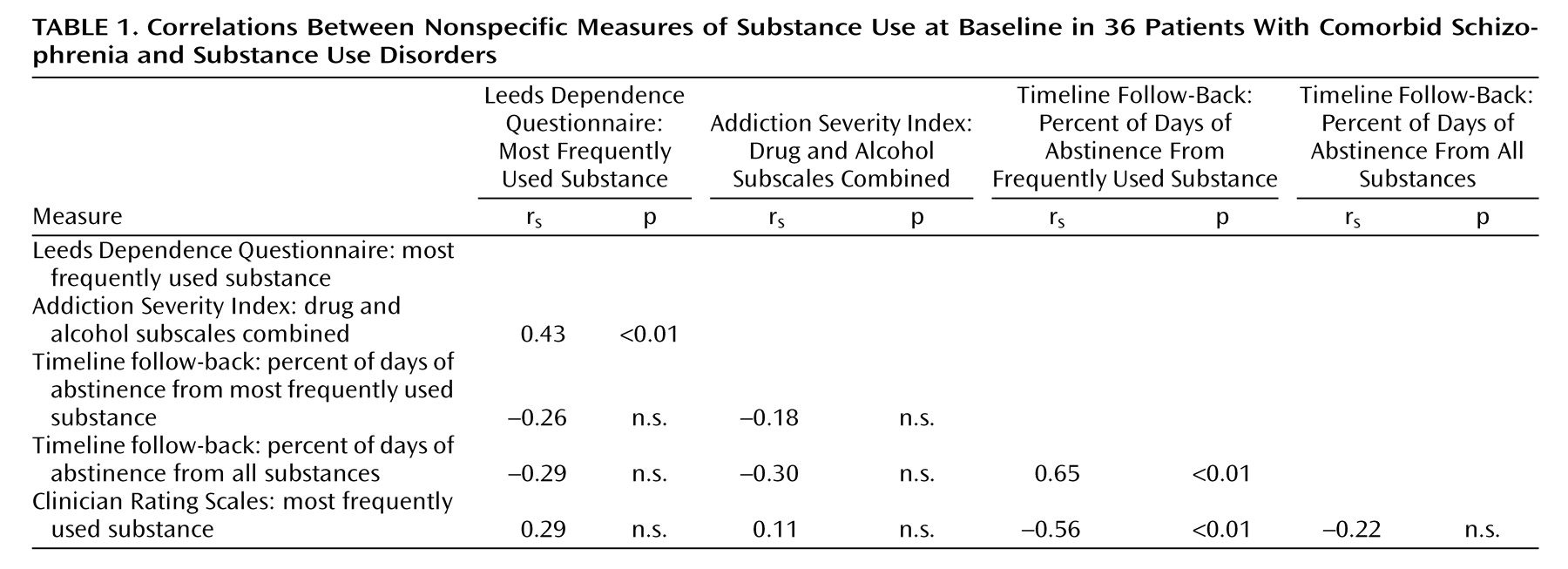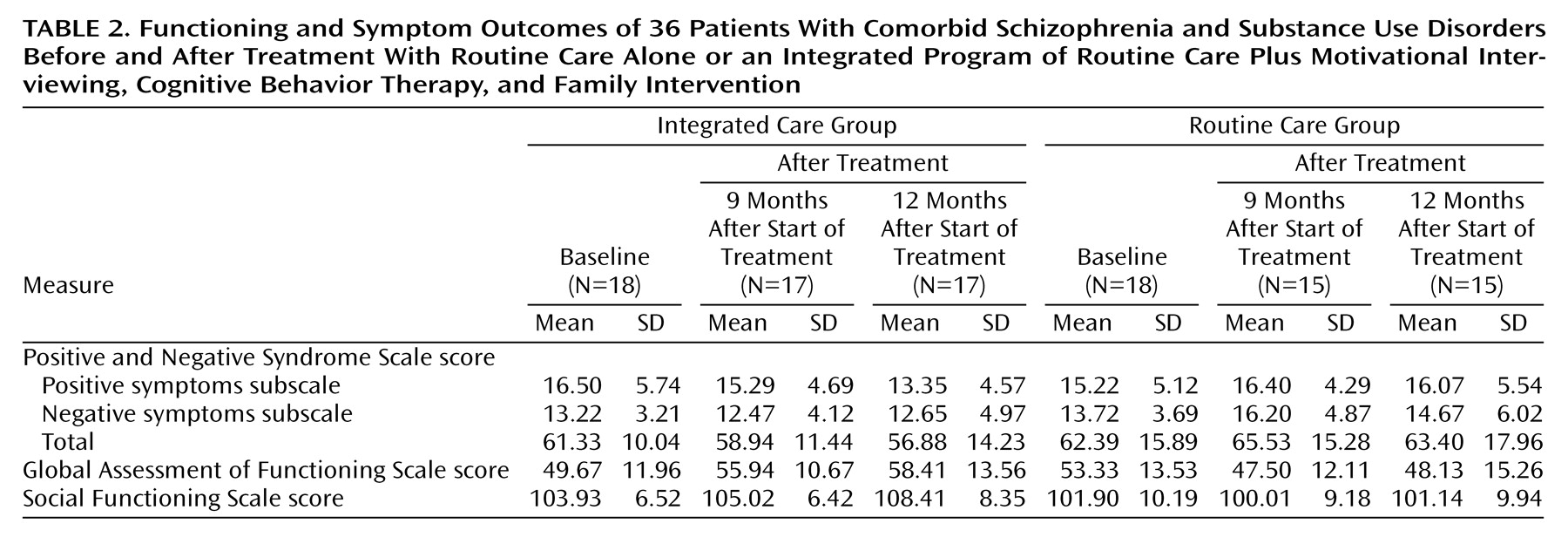Randomized Controlled Trial of Motivational Interviewing, Cognitive Behavior Therapy, and Family Intervention for Patients With Comorbid Schizophrenia and Substance Use Disorders
Abstract
Method
Design
Patient and Caregiver Selection and Allocation
Interventions
Integrated intervention program
Routine care
Assessment Procedures and Instruments
Primary and secondary outcomes
Assessment of patients’ symptoms and functioning
Medication compliance
Patient relapse outcomes
Patients’ substance use
Concurrent Validity of Substance Use Measures
Analyses
Results
Participant Flow and Follow-Up
Participation in the Integrated Program
Patient Outcomes
Symptoms and functioning
Relapse
Substance use disorders
Leeds Dependence Questionnaire and Addiction Severity Index scores
Discussion



Footnote
References
Information & Authors
Information
Published In
History
Authors
Metrics & Citations
Metrics
Citations
Export Citations
If you have the appropriate software installed, you can download article citation data to the citation manager of your choice. Simply select your manager software from the list below and click Download.
For more information or tips please see 'Downloading to a citation manager' in the Help menu.
View Options
View options
PDF/EPUB
View PDF/EPUBLogin options
Already a subscriber? Access your subscription through your login credentials or your institution for full access to this article.
Personal login Institutional Login Open Athens loginNot a subscriber?
PsychiatryOnline subscription options offer access to the DSM-5-TR® library, books, journals, CME, and patient resources. This all-in-one virtual library provides psychiatrists and mental health professionals with key resources for diagnosis, treatment, research, and professional development.
Need more help? PsychiatryOnline Customer Service may be reached by emailing [email protected] or by calling 800-368-5777 (in the U.S.) or 703-907-7322 (outside the U.S.).

